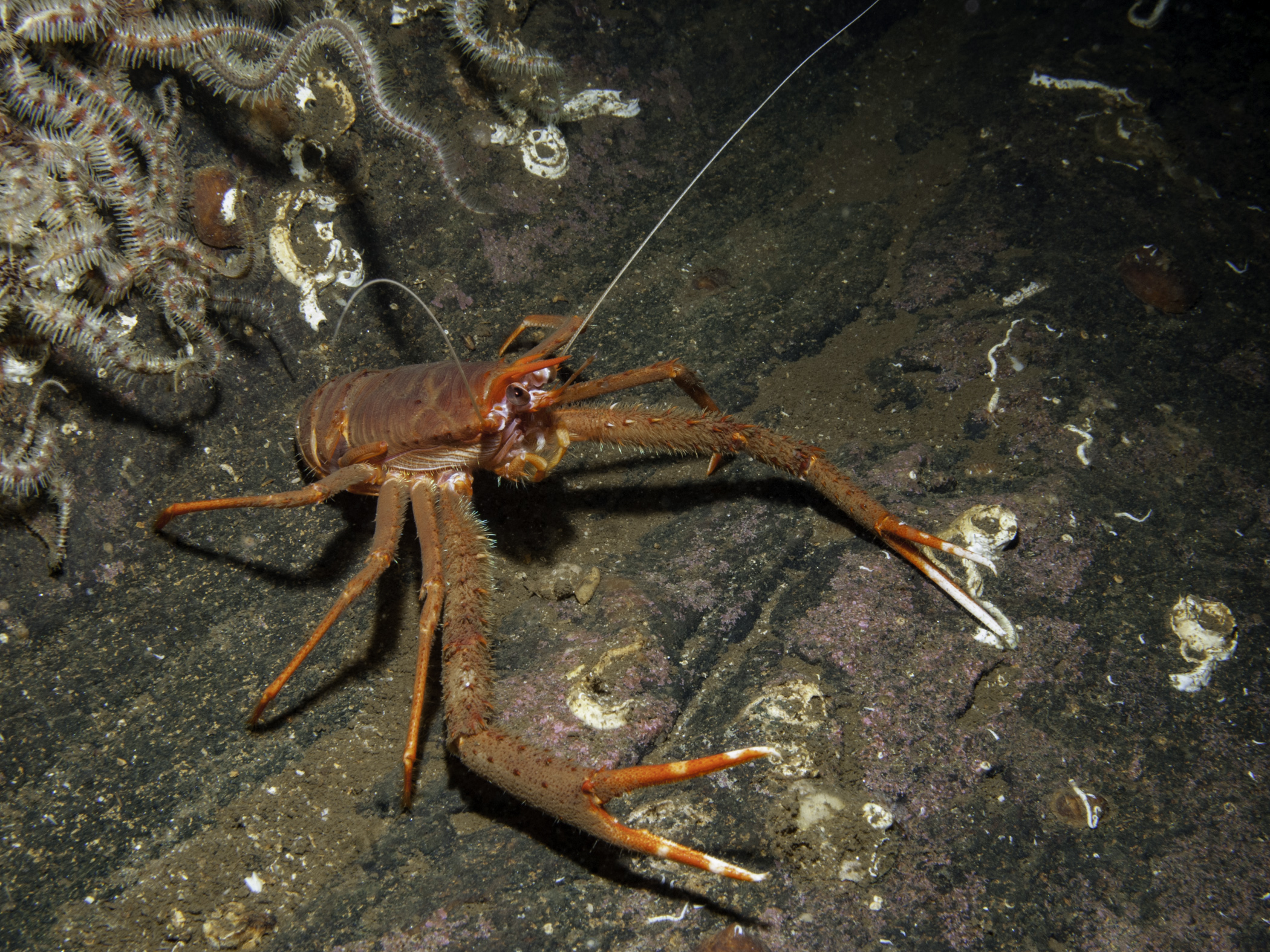Northern Ireland Priority species (NIPS)
| CRUSTACEA : Decapoda : Munididae | CRABS, SHRIMPS AND LOBSTERS |
Munida rugosa (Fabricius, 1775)
 |
| Munida rugosa |
A widespread and common species throughout the Northern Ireland coast, which probably holds the great majority of the Irish population.
In brief
- Throughout the Northern Ireland coast
- Low intertidal, to about 100m depth, on muddy/sandy areas with stones and rocks providing hiding places
- Can be found throughout the year
- Thought to be declining
- Main threats likely to come from disruption of seabed habitat from use of mobile fishing gear.
Species description: The rugose squat lobster grows to about 10cm in length when its abdomen is extended but this is misleading because normally it is curled up under the thorax, or central zone of the body. By flicking this abdomen sharply forward and under, it is able to dart backwards quite rapidly. It is an orange-reddish brown colour, with darker, or yellowish, striations across the carapace (upper shell) and abdomen, giving quite a distinctive pattern. The claws, spines and legs are all tipped white. The antennae are long, but not quite as long as the long thin spiny claws which are about double the length of the body.
Life cycle: Mature females carry eggs on their underside, where after mating and fertilisation, these develop into larval forms for about two weeks. They hatch into planktonic larvae, eventually settling after dispersal onto suitable habitat.
Similar species: No other Northern Irish squat lobster has such long claws or this combination of colours.
How to see this species: The species can be found throughout the year, and very widely throughout Northern Ireland coasts, in low intertidal zones through to depths of 50-100m, on sandy or soft substrata, particularly where stony crevices also offer hiding places. Key locations in Northern Ireland include Portrush Skerries, all round Rathlin, the Maidens, off Muck Island, Larne and the Gobbins, in the north end of Strangford Lough Narrows, and widely in its interior. Elsewhere in Ireland, it occurs on the south coast and is recorded off the Aran Islands, and in Britain there are numerous sites around western Scotland, north-eastern and eastern England.
Current status: Widespread in Northern Ireland. The species has no legal protection.
Why is this species a priority in Northern Ireland? Northern Ireland seems likely to hold very much over 50 per cent of the total Ireland population. It is likely this species has declined here, due to loss of habitat.
Threats: Data for the exact conservation status of this species is lacking; however, its habitat of relatively level seabeds of sand and other sediments (although it utilises shelter from any boulders or stones) implies that it may well have suffered habitat loss from the use of mobile fishing gear.
Distribution Map from NBN: Munida rugosa at National Biodiversity Network mapping facility, data for UK.
iNaturalist: Munida rugosa at iNaturalist World Species Observations database.
WoRMS: Munida rugosa at World Register of Marine Species. Accepted name: Munida rugosa (Fabricius, 1775). AphiaID: 107160.
Classification: Biota; Animalia; Arthropoda; Crustacea; Multicrustacea; Malacostraca; Eumalacostraca; Eucarida; Decapoda; Pleocyemata; Anomura; Galatheoidea; Munididae; Munida
| Previous species | Next species |
| Authors (2024). Munida rugosa. (Fabricius, 1775). [In] Priority species, Marine Biodiversity Portal NI. https://www2.habitas.org.uk/marbiop-ni/priorityaccounts.php?item=S24950. Accessed on 2025-04-19 |